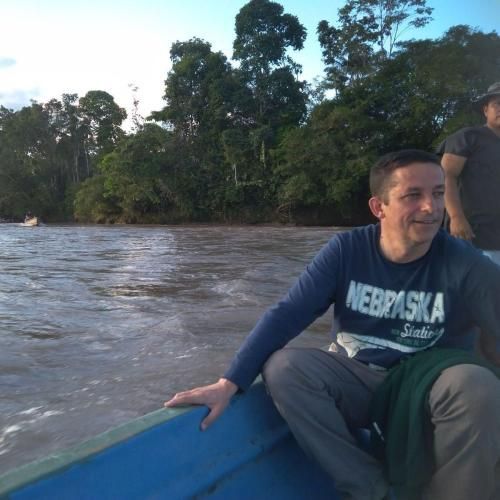
Rafael
Miranda Ferreiro
Catedrático de Universidad
Argitalpenak (146) Rafael Miranda Ferreiro argitalpenak Ikerketa datu erreferentziatuak ikusi.
2024
-
European water frame directive ecoregions do not adequately represent freshwater fish biogeography
Ecological Informatics, Vol. 81
-
The role of connectivity in conservation planning for species with obligatory interactions: Prospects for future climate scenarios
Global Change Biology, Vol. 30, Núm. 2
2023
-
A horizon scan exercise for aquatic invasive alien species in Iberian inland waters
Science of the Total Environment, Vol. 869
-
A multi-taxa assessment of aquatic non-indigenous species introduced into Iberian freshwater and transitional waters
NeoBiota, Vol. 89, pp. 17-44
-
A review and meta-analysis of the environmental biology of bleak Alburnus alburnus in its native and introduced ranges, with reflections on its invasiveness
Reviews in Fish Biology and Fisheries, Vol. 33, Núm. 4, pp. 931-975
-
Aquatic invasive alien species of freshwater and estuarine systems: awareness and prevention in the Iberian Peninsula: actions, key-instruments & lessons learned
Life Invasaqua
-
Corrigendum to ‘A horizon scan exercise for aquatic invasive alien species in Iberian inland waters’ Sci. Total Environ.869 (2023) 161798 (Science of the Total Environment (2023) 869, (S0048969723004138), (10.1016/j.scitotenv.2023.161798))
Science of the Total Environment
-
First record of trocheta subviridis dutrochet, 1817 (Arhynchobdellida, erpobdellidae) from the north-eastern iberian peninsula (navarra, spain)
Limnetica, Vol. 42, Núm. 1, pp. 1-6
-
Long-term monitoring on a new channelized stream section: changes in mesohabitat, composition, and size structure of fish assemblages
Restoration Ecology, Vol. 31, Núm. 8
-
RECOMENDACIONES ESTRATÉGICAS PARA LA GESTIÓN TRANSNACIONAL DE CANGREJOS EXÓTICOS INVASORES EN AGUAS INTERIORES IBÉRICA
LIFE INVASAQUA; D.L. MU 1033-2023
-
Spatial priorities for freshwater fish conservation in relation to protected areas
Aquatic Conservation: Marine and Freshwater Ecosystems, Vol. 33, Núm. 10, pp. 1028-1038
-
Streams in the Mediterranean Region are not for mussels: Predicting extinctions and range contractions under future climate change
Science of the Total Environment, Vol. 883
-
The Role of Zoos and Aquariums in a Changing World
Annual Review of Animal Biosciences, Vol. 11, pp. 287-306
2022
-
Climate change will redefine taxonomic, functional, and phylogenetic diversity of Odonata in space and time
npj Biodiversity, Vol. 1, Núm. 1
-
Conservation of Endemic Iberian Freshwater Fishes
Imperiled: The Encyclopedia of Conservation: Volume 1-3 (Elsevier), pp. 532-540
-
Conservation-status gaps for marine top-fished commercial species
Fishes, Vol. 7, Núm. 1
-
Effective reassessments of freshwater fish species: a case study in a Mediterranean peninsula
Hydrobiologia, Vol. 849, Núm. 6, pp. 1339-1349
-
Evaluating the influence of environmental variables on fish assemblages along Tropical Andes: considerations from ecology to conservation
Hydrobiologia, Vol. 849, Núm. 20, pp. 4569-4585
-
Lista negra e lista de alerta das espécies exóticas invasoras aquáticas da península ibérica (2022): Exercício transnacional de análise de horizonte focado nas espécies exóticas invasoras aquáticas de alto risco para as águas interiores ibéricas
Life Invasaqua
-
Lista negra y lista de alerta de especies exóticas invasoras acuáticas de la península ibérica (2022): ejercicio de exploración del horizonte transnacional centrado en las especies exóticas invasoras acuáticas de alto riesgo para las aguas interiores ibéricas
Life Invasaqua